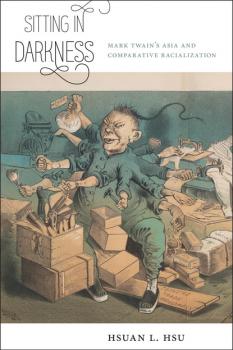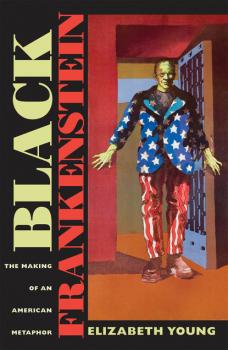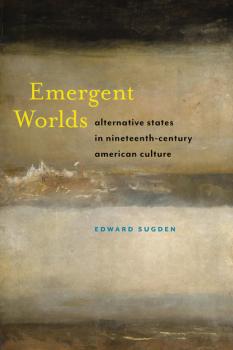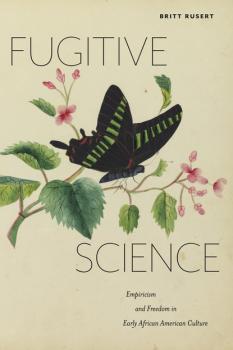America and the Long 19th Century
Скачать книги из серии America and the Long 19th CenturyRacial Reconstruction
The end of slavery and the Atlantic slave trade triggered wide-scale labor shortages across the U.S. and Caribbean. Planters looked to China as a source for labor replenishment, importing indentured laborers in what became known as “coolieism.” From heated Senate floor debates to Supreme Court test cases brought by Chinese activists, public anxieties over major shifts in the U.S. industrial landscape and class relations became displaced onto the figure of the Chinese labor immigrant who struggled for inclusion at a time when black freedmen were fighting to redefine citizenship. Racial Reconstruction demonstrates that U.S. racial formations should be studied in different registers and through comparative and transpacific approaches. It draws on political cartoons, immigration case files, plantation diaries, and sensationalized invasion fiction to explore the radical reconstruction of U.S. citizenship, race and labor relations, and imperial geopolitics that led to the Chinese Exclusion Act, America’s first racialized immigration ban. By charting the complex circulation of people, property, and print from the Pacific Rim to the Black Atlantic, Racial Reconstruction sheds new light on comparative racialization in America, and illuminates how slavery and Reconstruction influenced the histories of Chinese immigration to the West.
Unsettled States
In Unsettled States, Dana Luciano andIvy G. Wilson present some ofthe most exciting emergent scholarship in American literary and culturalstudies of the “long” nineteenth century. Featuring eleven essays from seniorscholars across the discipline, the book responds to recent critical challengesto the boundaries, both spatial and temporal, that have traditionally organizedscholarship within the field. The volume considers these recent challenges tobe aftershocks of earlier revolutions in content and method, and it seeks waysof inhabiting and amplifying the ongoing unsettledness of the field. Writtenby scholars primarily working in the “minor” fields of critical race and ethnicstudies, feminist and gender studies, labor studies, and queer/sexualitystudies, the essays share a minoritarian critical orientation. Minoritariancriticism, as an aesthetic, political, and ethical project, is dedicated to findingnew connections and possibilities within extant frameworks. Unsettled States seeks to demonstratehow the goals of minoritarian critique may be actualized without automaticrecourse to a predetermined “minor” location, subject, or critical approach.Its contributors work to develop practices of reading an “Americanliterature” in motion, identifying nodes of inquiry attuned to the rhythms of afield that is always on the move.
The Traumatic Colonel
InAmerican political fantasy, the Founding Fathers loom large, at once historicaland mythical figures. In The Traumatic Colonel, Michael J. Drexler andEd White examine the Founders as imaginative fictions, characters in thespecifically literary sense, whose significance emerged from narrative elementsclustered around them. From the revolutionary era through the 1790s, the Founderstook shape as a significant cultural system for thinking about politics, race,and sexuality. Yet after 1800, amid the pressures of the Louisiana Purchase andthe Haitian Revolution, this system could no longer accommodate the deepanxieties about the United States as a slave nation. Drexlerand White assert that the most emblematic of the political tensions of the timeis the figure of Aaron Burr, whose rise and fall were detailed in theliterature of his time: his electoral tie with Thomas Jefferson in 1800,the accusations of seduction, the notorious duel with Alexander Hamilton, hismachinations as the schemer of a breakaway empire, and his spectacular treasontrial. The authors venture a psychoanalytically-informed exploration of post-revolutionaryAmerica to suggest that the figure of “Burr” was fundamentally a displacedfantasy for addressing the Haitian Revolution. Drexler and White expose how thehistorical and literary fictions of the nation’s founding served to repress thelarger issue of the slave system and uncover the Burr myth as the crux of thatrepression. Exploring early American novels, such as the works of CharlesBrockden Brown and Tabitha Gilman Tenney, as well as the pamphlets, polemics,tracts, and biographies of the early republican period, the authors speculatethat this flourishing of political writing illuminates the notorious gap inU.S. literary history between 1800 and 1820.
Sitting in Darkness
Perhaps the most popular of all canonicalAmerican authors, Mark Twain is famous for creating works that satirizeAmerican formations of race and empire. While many scholars have exploredTwain’s work in African Americanist contexts, his writing on Asia and AsianAmericans remains largely in the shadows. In Sitting in Darkness, Hsuan Hsuexamines Twain’s career-long archive of writings about United States relationswith China and the Philippines. Comparing Twain’s early writings about Chineseimmigrants in California and Nevada with his later fictions of slavery andanti-imperialist essays, he demonstrates that Twain’s ideas about race were notlimited to white and black, but profoundly comparative as he carefully craftedassessments of racialization that drew connections between groups, includingAfrican Americans, Chinese immigrants, and a range of colonial populations.Drawing on recent legal scholarship,comparative ethnic studies, and transnational and American studies, Sitting inDarkness engages Twain’s best-known novels such as Tom Sawyer, HuckleberryFinn, and A Connecticut Yankee in King Arthur’s Court, as well as hislesser-known Chinese and trans-Pacific inflected writings, such as theallegorical tale “A Fable of the Yellow Terror” and the yellow face play AhSin. Sitting in Darkness reveals how within intersectional contexts of ChineseExclusion and Jim Crow, these writings registered fluctuating connectionsbetween immigration policy, imperialist ventures, and racism.
Neither Fugitive nor Free
Neither Fugitive nor Free draws on the freedom suit as recorded in the press and court documents to offer a critically and historically engaged understanding of the freedom celebrated in the literary and cultural histories of transatlantic abolitionism. Freedom suits involved those enslaved valets, nurses, and maids who accompanied slaveholders onto free soil. Once brought into a free jurisdiction, these attendants became informally free, even if they were taken back to a slave jurisdiction—at least according to abolitionists and the enslaved themselves. In order to secure their freedom formally, slave attendants or others on their behalf had to bring suit in a court of law.Edlie Wong critically recuperates these cases in an effort to reexamine and redefine the legal construction of freedom, will, and consent. This study places such historically central anti-slavery figures as Frederick Douglass, Olaudah Equiano, and William Lloyd Garrison alongside such lesser-known slave plaintiffs as Lucy Ann Delaney, Grace, Catharine Linda, Med, and Harriet Robinson Scott. Situated at the confluence of literary criticism, feminism, and legal history, Neither Fugitive nor Free presents the freedom suit as a «new» genre to African American and American literary studies.
Bodies of Reform
From the patricians of the early republic to post-Reconstruction racial scientists, from fin de siècle progressivist social reformers to post-war sociologists, character, that curiously formable yet equally formidable “stuff,” has had a long and checkered history giving shape to the American national identity. Bodies of Reform reconceives this pivotal category of nineteenth-century literature and culture by charting the development of the concept of “character” in the fictional genres, social reform movements, and political cultures of the United States from the mid-nineteenth to the early-twentieth century. By reading novelists such as Herman Melville, Mark Twain, Pauline Hopkins, and Charlotte Perkins Gilman alongside a diverse collection of texts concerned with the mission of building character, including child-rearing guides, muscle-building magazines, libel and naturalization law, Scout handbooks, and success manuals, James B. Salazar uncovers how the cultural practices of representing character operated in tandem with the character-building strategies of social reformers. His innovative reading of this archive offers a radical revision of this defining category in U.S. literature and culture, arguing that character was the keystone of a cultural politics of embodiment, a politics that played a critical role in determining-and contesting-the social mobility, political authority, and cultural meaning of the raced and gendered body.
Black Frankenstein
For all the scholarship devoted to Mary Shelley's English novel Frankenstein, there has been surprisingly little attention paid to its role in American culture, and virtually none to its racial resonances in the United States. In Black Frankenstein , Elizabeth Young identifies and interprets the figure of a black American Frankenstein monster as it appears with surprising frequency throughout nineteenth- and twentieth-century U.S. culture, in fiction, film, essays, oratory, painting, and other media, and in works by both whites and African Americans.Black Frankenstein stories, Young argues, effect four kinds of racial critique: they humanize the slave; they explain, if not justify, black violence; they condemn the slaveowner; and they expose the instability of white power. The black Frankenstein's monster has served as a powerful metaphor for reinforcing racial hierarchy—and as an even more powerful metaphor for shaping anti-racist critique. Illuminating the power of parody and reappropriation, Black Frankenstein tells the story of a metaphor that continues to matter to literature, culture, aesthetics, and politics.
Emergent Worlds
Reimagines the American 19th century through a sweeping interdisciplinary engagement with oceans, genres, and time Emergent Worlds re-locates nineteenth-century America from the land to the oceans and seas that surrounded it. Edward Sugden argues that these ocean spaces existed in a unique historical fold between the transformations that inaugurated the modern era—colonialism to nationalism, mercantilism to capitalism, slavery to freedom, and deferent subject to free citizen. As travellers, workers, and writers journeyed across the Pacific, Atlantic, and Caribbean Sea, they had to adapt their political expectations to the interstitial social realities that they saw before them while also feeling their very consciousness, particularly their perception of time, mutate. These four domains—oceanic geography, historical folds, emergent politics, and dissonant times—in turn, provided the conditions for the development of three previously unnamed genres of the 1850s: the Pacific elegy, the black counterfactual, and the immigrant gothic. In telling the history of these emergent worlds and their importance to the development of the literary cultures of the US Americas, Sugden proposes narratives that alter some of the most enduring myths of the field, including the westward spread of US imperialism, the redemptionist trajectory of black historiography, and the notion that the US Americas constituted a new world. Introducing a new generic vocabulary for describing the literature of the 1850s and crossing over oceans and languages, Emergent Worlds invokes an alternative nineteenth-century America that provides nothing less than a new way to read the era.
Before Chicano
Uncovers the long history of how Latino manhood was integral to the formation of Latino identity [b][/b]In the first ever book-length study of Latino manhood before the Civil Rights Movement, Before Chicano examines Mexican American print culture to explore how conceptions of citizenship and manhood developed in the nineteenth and twentieth centuries. The year 1848 saw both the signing of the Treaty of Guadalupe Hidalgo that ended the U.S. Mexican War and the year of the Seneca Falls Convention, the first organized conference on women’s rights in the United States. These concurrent events signaled new ways of thinking about U.S. citizenship, and placing these historical moments into conversation with the archive of Mexican American print culture, Varon offers an expanded temporal frame for Mexican Americans as long-standing participants in U.S. national projects. Pulling from a wide-variety of familiar and lesser-known works—from fiction and newspapers to government documents, images, and travelogues—Varon illustrates how Mexican Americans during this period envisioned themselves as U.S. citizens through cultural depictions of manhood. Before Chicano reveals how manhood offered a strategy to disparate Latino communities across the nation to imagine themselves as a cohesive whole—as Mexican Americans—and as political agents in the U.S. Though the Civil Rights Movement is typically recognized as the origin point for the study of Latino culture, Varon pushes us to consider an intellectual history that far predates the late twentieth century, one that is both national and transnational. He expands our framework for imagining Latinos’ relationship to the U.S. and to a past that is often left behind.
Fugitive Science
Honorable Mention, 2019 MLA Prize for a First Book Sole Finalist Mention for the 2018 Lora Romero First Book Prize, presented by the American Studies Association Exposes the influential work of a group of black artists to confront and refute scientific racism. Traversing the archives of early African American literature, performance, and visual culture, Britt Rusert uncovers the dynamic experiments of a group of black writers, artists, and performers. Fugitive Science chronicles a little-known story about race and science in America. While the history of scientific racism in the nineteenth century has been well-documented, there was also a counter-movement of African Americans who worked to refute its claims. Far from rejecting science, these figures were careful readers of antebellum science who linked diverse fields—from astronomy to physiology—to both on-the-ground activism and more speculative forms of knowledge creation. Routinely excluded from institutions of scientific learning and training, they transformed cultural spaces like the page, the stage, the parlor, and even the pulpit into laboratories of knowledge and experimentation. From the recovery of neglected figures like Robert Benjamin Lewis, Hosea Easton, and Sarah Mapps Douglass, to new accounts of Martin Delany, Henry Box Brown, and Frederick Douglass, Fugitive Science makes natural science central to how we understand the origins and development of African American literature and culture. This distinct and pioneering book will spark interest from anyone wishing to learn more on race and society.Honorable Mention, 2019 MLA Prize for a First Book Sole Finalist Mention for the 2018 Lora Romero First Book Prize, presented by the American Studies Association Exposes the influential work of a group of black artists to confront and refute scientific racism. Traversing the archives of early African American literature, performance, and visual culture, Britt Rusert uncovers the dynamic experiments of a group of black writers, artists, and performers. Fugitive Science chronicles a little-known story about race and science in America. While the history of scientific racism in the nineteenth century has been well-documented, there was also a counter-movement of African Americans who worked to refute its claims. Far from rejecting science, these figures were careful readers of antebellum science who linked diverse fields—from astronomy to physiology—to both on-the-ground activism and more speculative forms of knowledge creation. Routinely excluded from institutions of scientific learning and training, they transformed cultural spaces like the page, the stage, the parlor, and even the pulpit into laboratories of knowledge and experimentation. From the recovery of neglected figures like Robert Benjamin Lewis, Hosea Easton, and Sarah Mapps Douglass, to new accounts of Martin Delany, Henry Box Brown, and Frederick Douglass, Fugitive Science makes natural science central to how we understand the origins and development of African American literature and culture. This distinct and pioneering book will spark interest from anyone wishing to learn more on race and society.









